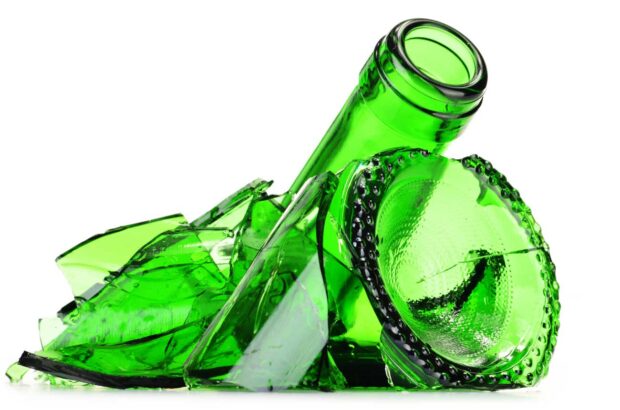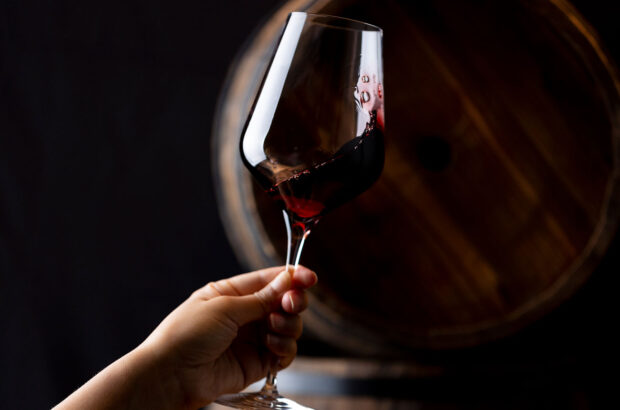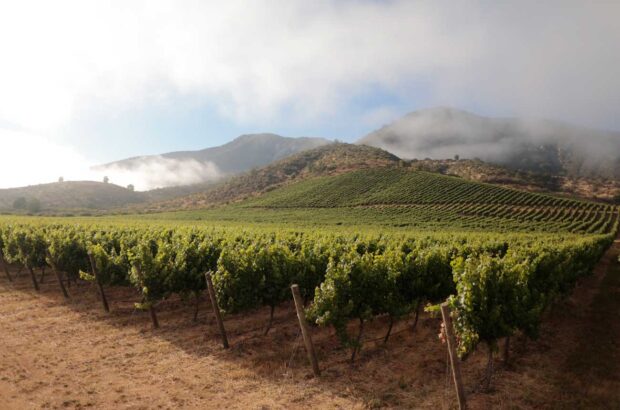Fiona Beckett visits the Cape Winelands' winners of the Best of Wine Tourism awards and revels in the region's heavenly offerings of food, art, architecture and nature...
There’s apparently a syndrome called Cape Town comedown: the deflated feeling you get after returning from a trip to South Africa. Certainly landing there in April after a seemingly endless winter seemed like being transported to some kind of heaven – their autumn was far warmer and sunnier than our spring. (Tempting though it might sound, avoid the high season – and high prices – of December, January and February. Insiders say March/April is the best time to enjoy the region.)
Since my last trip, three years previously, the Cape Winelands in the Western Cape province seemed to have come on in leaps and bounds. Where it was once a question of walking into a tasting room and eating some admittedly very delicious food, the wineries were now offering so much more in the way of visitor experiences: stunning architecture, art, nature trails, even – in the case of the newly opened Spice Route visitor centre – partnerships with other local businesses, including a brewery and a chocolate factory. It’s easy to see why the region qualifies as one of the great wine capitals, and why there’s such hot competition for the Best of Wine Tourism awards.
Rich in history and culture
My first port of call was the historic estate of la Motte, which won the overall title of wine tourism champion for ticking practically every box, skilfully combining the old and the new. you could easily spend a day here, starting with a Winelands tea (and straw wine), an experience that lends a whole new meaning to the idea of elevenses, and ending up with dinner at the innovative pierneef à la Motte, named after the early 20th century landscape artist. There’s a unique collection of his paintings, and a series of changing exhibitions.
The food, which draws on traditional Cape Dutch cuisine for inspiration, is overseen by Hanneli Rupert-Koegelenberg, the daughter of the well known and late South African industrialist Dr Anton Rupert, and given a modern twist by chef Chris Erasmus, who has spent time at Noma.
Everything is perfectly restored: the manor house, built in 1751; the old cellar, built in 1782 and now used for concerts (Rupert-Koegelenberg is an acclaimed mezzo-soprano); and the old watermill that still produces stone-ground bread for the kitchen and gift shop. you can take a historic walk round the buildings on Wednesday mornings, but try and see the estate, as I did, in the early evening with the sun slanting, golden, through the trees. The light in the Franschhoek Valley is incredible.
Rupert was a noted conservationist, a tradition that has been built on by the current generation, who have created an extensive protea garden and organic vegetable garden, and cultivated the mountain area above the estate. I was disappointed when a rare spot of rain scotched my plan to take an early morning walk up the hiking trail, though possibly this was a blessing given the size of my dinner the night before (the trail requires a ‘fair degree of fitness’, according to the website).
La Motte also owns nearby leopard’s leap, a winery you might be inclined to disregard given the low cost of the wines, but it has created a relaxed atmosphere around a modern buffet-style restaurant and rotisserie that would be great for families visiting with children, as well as a cookery school and kitchen shop. You can also see an interactive screen projected on the wall that shows where leopards have been spotted (fortunately not too many of them, or too near). Over the road are the gallery and gardens of Grande Provence, where they almost forgot to let me taste their wine, so keen were they to show off their art collection, which contains some of the best contemporary South African art, sculpture and ceramics. They use the gallery for tastings, and it must be one of the few places where you can taste against the background of a huge, wall-wide collage, almost as if you were in a studio.
Some of the buildings too are striking. The award for architecture went to Waterkloof in Somerset West, where the dramatic glass-walled restaurant and ‘cellar in the sky’ overlooks False Bay, a striking contrast to the artisanal practices of the biodynamically run estate, where horses are still used to plough the vineyards.
There are similarly dramatic buildings at Tokara. This award-winning winery, restaurant and cellar has been established for a while, and the newer delicatessen – whose claim to be child- friendly is borne out by a playful, upside-down wooden man that dominates the entrance – is part of an imaginative play area and sculpture garden. You can see how one winery vies with another to have the best facilities.
Vineyards with a view
If you can drag yourself away from the visitor centres, there are plenty of opportunities to get into the vineyards. At Waterford we went on a wine safari that involved juddering in a Land Rover up the foothills of the Helderberg. We drank Kevin Arnold’s 2004 The Jem on a platform overlooking the vineyards, with his patient dog, who had kept pace with the car, panting at our feet. We were also compensated for a shower by one of the most beautiful rainbows I’ve ever seen. It’s that kind of experience that preserves a wine in your memory.
At Avondale, a beautiful, sustainably run farm in the Paarl Valley, we had a similar experience before being treated to a show-stopping performance from the farm’s resident ducks, which waddle out of their ‘duck mobile’ to forage for snails that would otherwise damage the vines. (Avondale was one of the first to gain the Biodiversity in Wine certificate.)
Then there’s Mike Ratcliffe of Warwick, a seasoned old hand at creating spectacular tourist experiences. I can remember being taken up to the highest point of his vineyards 10 years or so ago and watching the most dramatic sunset, blazing red against the mountains. Now you can have a similar experience on horseback – or stay closer to the winery with a private picnic pod for two or a family group. A day bed for 15 is planned for one of them, apparently.
Fruits of the earth
More sedate experiences are on offer for gardening aficionados. If you’re interested in trees you should definitely visit the gorgeous park and forest of Vergelegen, which was created by botanist and forester Willem Adriaan van der Stel in the early 18th century. It contains the oldest oak tree in South Africa, the only white mulberry tree outside southern China, and a collection of camphor trees, after which the classy restaurant takes its name. And I was repeatedly tipped off about Babylonstoren, an amazing farm, fruit and vegetable garden in the Drakenstein Valley, where you’re encouraged not only to pick what you like, but also help plant or prune. It’s hard to imagine the scale – there are eight acres, divided into citrus orchards, herbs, salads – you need a day to do it justice. You can even stay in the whitewashed former workers’ cottages, which feature a well- equipped kitchen. The restaurant, Babel, and beautifully designed farm shop supply other ingredients you might need such as bread, eggs and cheese, and even homemade cordials if you’re taking a temporary break from the wine.
At the other end of the scale, there’s the luxury accommodation of Delaire Graff Estate, owned by billionaire businessman and art collector Laurence Graff and whose suites have their own infinity pools overlooking the vineyards. (The temptation to take a skinny dip was just too great to resist.)
Sophisticated pairings
Compared to these innovative experiences, the fact that most of these wineries have world-class restaurants seems unremarkable. But here too the Winelands have made extraordinary progress, perfecting simple, sophisticated food where technique doesn’t get in the way of first-class, local ingredients. Tokara won the prize for best winery restaurant, but I also had spectacular meals – and wine-pairing experiences – at Pierneef à La Motte, Waterkloof, Rust en Vrede and Camphor. The wine lists too have become far more comprehensive, ranging well beyond the farms’ own fare. Just look at Rust en Vrede’s Champagne list for a start.
Estates like Creation are also using their kitchens for food and wine matching experiences – and La Motte’s selection of wine-pairing canapés won it the prize for an innovative wine tourism experience. (All were spot on, but I can particularly recommend the wild mushroom and polenta tart with La Motte’s Pinot Noir, and the chorizo empanadita with the Syrah.) Other wineries offer tastings based on a single ingredient: chocolate in the case of Waterford and Spice Route, and cheese at Fairview.
You really don’t have to look very far to see why the standard of South African wine tourism is as high as it is. If you were a successful business owner with an ambition to go into wine, it’s unbeatable as a place to spend your hard-earned cash: the BBW (billionaire buys winery) syndrome, as Mike Warwick nicely puts it. There is space, there is labour, there is history – projects are managed by well-travelled men and women accustomed to being the best in their field. What is striking is the good taste with which practically everything is executed.
But perhaps the most interesting thing I noticed was that the majority black population is present not just as staff, but visitors too: a new professional black middle class is beginning to come down from Johannesburg and Pretoria to sample wine country for itself. That was the most significant change from my last visit, and perhaps the most encouraging one for the future.
For more on the category winners, visit the Cape Winelands page of the Best of Wine Tourism website, greatwinecapitals.com. Wine and Only, wineandonly.com, also has information on what other wineries have to offer, while Go Cape, www.gocape.co.za, arranges private tours of the Winelands and can arrange car hire.
Written by Fiona Beckett







